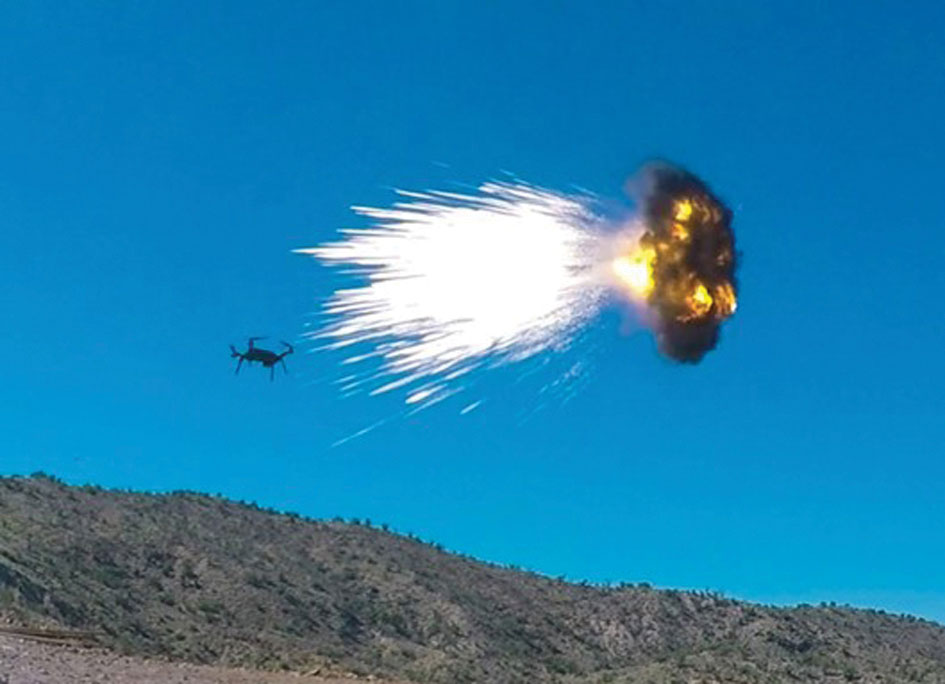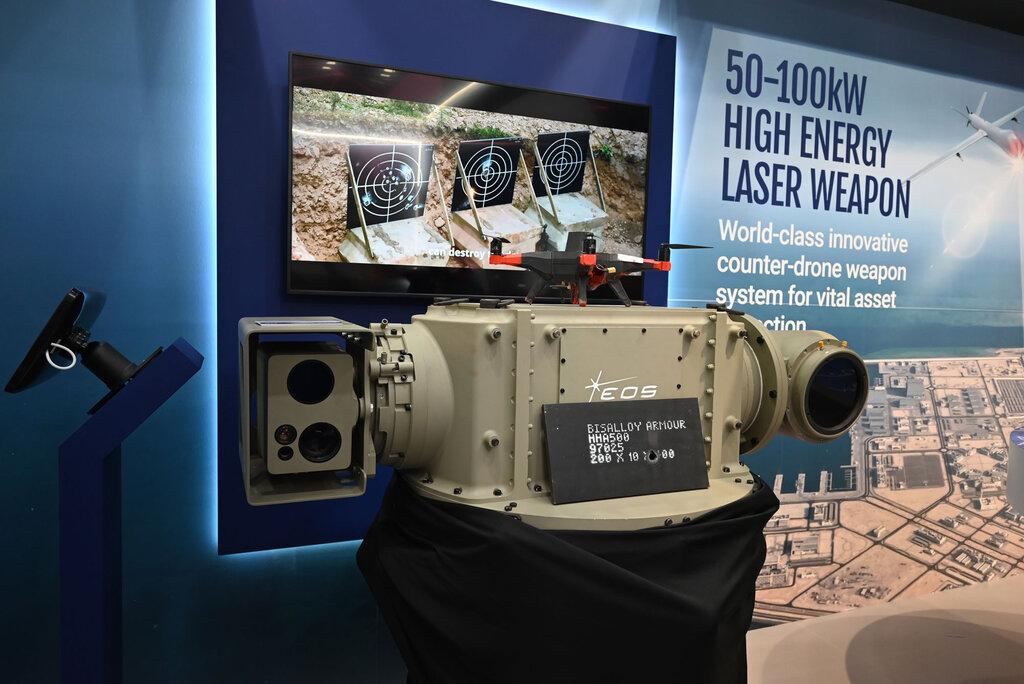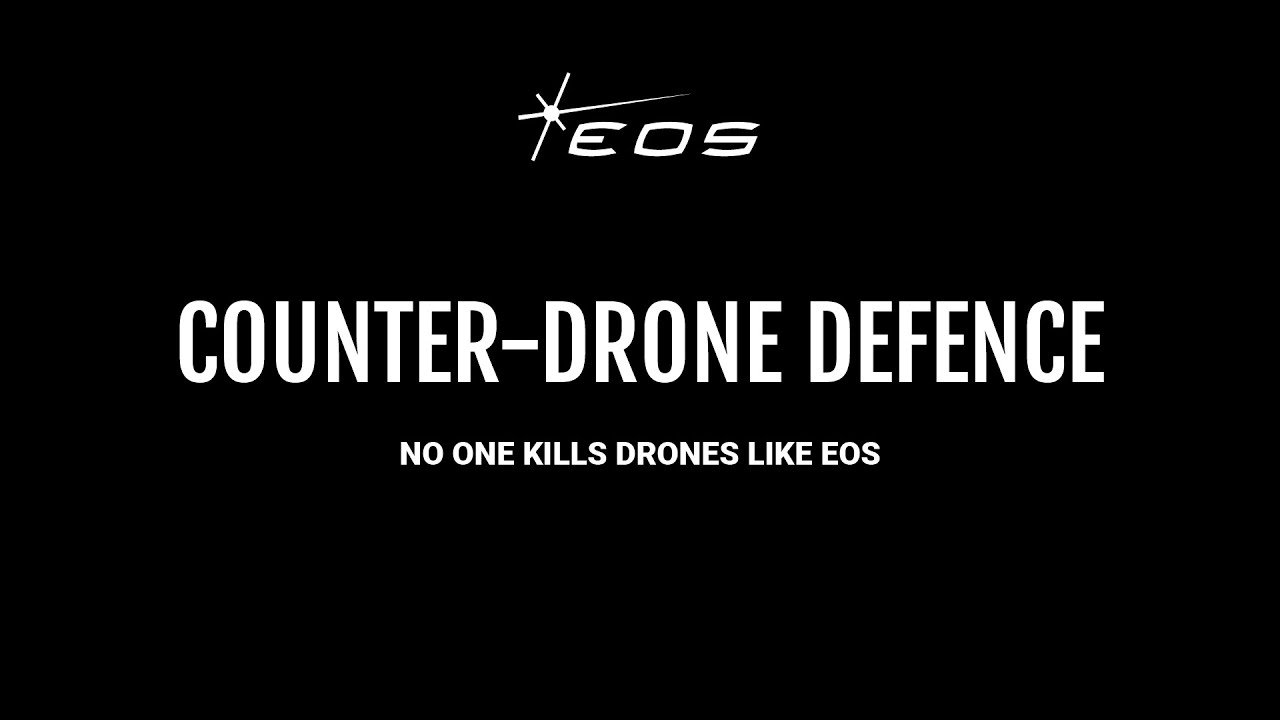Company Insight
Sponsored by Electro Optic Systems
Total Drone Defence: EOS’ Holistic Counter‑Drone Arsenal
The mining sector is notorious for being slow when it comes to embracing new technology.
Main image credit:
At Land Forces 2024, Electro Optic Systems (EOS) made a powerful statement, showcasing its cutting-edge Australian-made defence technologies. The spotlight was on the Slinger system, alongside the R400 Marine and R800 remote weapon systems, which boast precise firepower and counter-drone laser integration. Attendees were also immersed in an Augmented Reality battlefield, giving them a firsthand look at EOS’ innovations in Space Domain Awareness and SATCOM-on-the-move. Hanwha featured an R400 prominently atop their Redback IFV, as did Bale Defence on their new RTV6 vehicle.
As drone technology rapidly evolves, so do the threats they pose on the battlefield. From low-cost commercial drones used in large numbers to more sophisticated weaponised systems, the need for versatile and cost-effective defence solutions has never been more pressing. EOS, under the leadership of CEO Dr. Andreas Schwer, is focused on delivering counter-drone technologies that are not only efficient but also accessible to a wide range of defence forces worldwide.
According to Schwer, the landscape of modern warfare has shifted dramatically, with the primary threats moving away from complex and highly sophisticated systems such as class four or five drones, fighter jets, and helicopters, which typically targeted high-value assets. In today’s conflicts, especially in Ukraine, inexpensive, semi-commercialised drones are being deployed in large numbers. Schwer explains, “These drones, often produced for less than $1,000, have fundamentally altered the dynamics of the battlefield."
This shift in drone usage has brought about a change in priorities for defence forces. Instead of focusing on high-value point targets, there is now an urgent need to protect lower-value and medium-value assets. Schwer adds, “In the past, assets such as military or logistics trucks were not typically targeted, as it was not cost-effective to deploy a $500,000 missile against a $100,000 vehicle. This dynamic has now shifted, and lower- and medium-value targets require protection as they have become more vulnerable."
Traditional missile-based systems are no longer practical for defending a wide range of targets. Missile or rocket-based effectors, which were once effective, have become less viable for safeguarding diverse assets. Instead, cost-effective defence solutions, like those developed by EOS, are essential to protect hundreds of assets spread across vast territories.
With diesel vehicles accounting for 30% to 50% of greenhouse emissions at a mine site, replacing them with a battery-electric fleet is a sure way to drastically reduce overall CO2 emissions, but how else can mines benefit from this technology?
Leading underground manufacturers Normet believe the answer lies with SmartDrive. This architecture for battery electric vehicles (BEV) was developed in collaboration with customers, building on feedback, predicting future trends, and assessing the limitations of diesel engines, and comes with a wealth of benefits for operators.
Cost-Effective Counter-Drone Solutions
One of the flagship technologies EOS is offering in this space is the Slinger system, which incorporates a radar, 30mm cannon with specially designed ammunition, and EOS’ proprietary stabilisation and pointing technology. It is designed to provide affordable yet highly effective protection against drone threats. Unlike many traditional systems, the Slinger is able to offer similar capabilities at a fraction of the cost.
“Our system’s unit cost is significantly lower than that of traditional cannon-based air defence systems,” Schwer points out. “Some competitors offer platforms at ten times our cost, often with larger 35-millimetre calibre. But is it worth ten times the cost? The answer from our clients is clear: ‘No, we cannot justify the cost.’”
The Slinger system also offers another distinct advantage: its ability to utilise a variety of ammunition types, depending on the tactical situation and budget constraints. Schwer explains that the system can accommodate everything from high-cost, precision rounds to more affordable options.

Cost-Effective Counter-Drone Solutions. Credit: Electro Optic Systems
The system can accommodate various types of ammunition, including air-burst or proximity rounds, which can enhance the first-hit probability, though they are more costly than standard ammunition. Currently, a single round costs over $1,000, but this is expected to decrease to around $700 in the near future. Alternatively, the system can use standard high-explosive rounds priced at around $100. Given that Slinger has the highest first-hit accuracy in the market, these standard rounds are often sufficient to defeat the drone, allowing clients to significantly reduce costs by opting for more affordable ammunition.
In addition to its cost-effectiveness, the Slinger system is versatile in its application. “Our system is just as useful for ground-to-ground operations as it is for counter-UAS, which most of the other sophisticated systems can't do.” Schwer notes.
Harnessing Artificial Intelligence for Superior Drone Tracking
EOS is also leveraging advancements in artificial intelligence (AI) to enhance the capabilities of its counter-drone solutions. By integrating AI into their systems, EOS can more effectively differentiate between real threats and non-threats, reducing the risk of false positives.
“Our use of artificial intelligence allows us to discriminate between birds and drones, as well as identify friendly and hostile drones with precision,” Schwer explains. “This AI-driven approach has not only significantly improved our target identification capabilities but also ensure consistent, high-accuracy tracking of small drones, even in challenging conditions such as cloud cover and mist.”
The identification is also critical when operating in complex battlefield situations where multiple drones, some friendly and others hostile, may be present at the same time.
In early June 2019, mining companies avoided increases to royalties by agreeing to provide A$70m to a A$100m infrastructure fund.
Frank Smith, Founder and CEO of TowHaul

Hard Kill. Credit: Electro Optic Systems
The Future of Laser-Based Weapons
As EOS continues to innovate, one of the most exciting developments is its laser-based weapon technology. These systems offer a powerful and cost-effective alternative to traditional missile systems, which are often too expensive for widespread use. Schwer sees laser technology as a key part of EOS’ future.
“We foresee a significant future for our high-energy laser weapon technology, which allows us to defeat drones at greater ranges and with increased efficiency,” Schwer explains. “A single laser is capable of engaging 10-20 drones per minute – something that remote weapon systems cannot achieve. This technology will eventually replace short-range air defence missile systems (V-SHORAD), as these are rarely cost-effective in large quantities.”

The Future of Laser-Based Weapons. Credit: Electro Optic Systems

Phillip Day. Credit: Scotgold Resources
EOS’ high-energy laser weapons can engage drones at distances of up to six or seven kilometers, offering a considerable range advantage over traditional cannon-based systems. Schwer is quick to note, however, that this technology is not suitable for all markets. “Our primary customers are within the European/NATO markets and the wealthier Middle Eastern regions, where high-energy laser systems are a viable investment,” Schwer says.
Looking to the Future: Electromagnetic Pulse for Counter-Drone Capabilities
As EOS continues to refine its counter-drone capabilities, the company is also exploring new technologies to stay ahead of emerging threats. One area of interest is electromagnetic pulse (EMP) weapons, which have the potential to disable drones in large numbers.
“We may introduce EMP platforms in the future, either through acquisition or strategic partnerships,” Schwer says. “While we believe EMP technology will play a role, it is unlikely to be as pivotal as our laser weapon systems.”
However, Schwer is quick to point out that the technology is not yet ready for widespread use, due to limitations in range and the potential for collateral damage. For now, EOS is focusing on more immediately deployable solutions, such as its Laser Dazzler system.
The Laser Dazzler , integrated into EOS’ R800 and R400 remote weapon systems, is a non-kinetic counter-drone solution designed to defeat threats by dazzling the optical sensor head of hostile drones. With its low energy requirements—operating effectively with just 500 watts to 1.5 kilowatts—the Laser Dazzler blinds drones' sensors, often triggering self-destruction modes. Its compact design and seamless integration into existing remote weapon systems make it a cost-effective, versatile option for enhancing battlefield effectiveness without the need for additional sensor platforms.
“It is a unique solution in the marketplace, and something I haven’t seen any of our competitors offering,” Schwer states. “We have successfully demonstrated its capabilities during recent NATO field tests in Canada, where the Laser Dazzler was taking out drones at distances of up to one kilometre.”
Caption. Credit:
The Comprehensive Solution for Counter‑Drone Defence
Thanks to their multi-layered technologies, incorporating kinetic, non-kinetic, and blended systems, EOS leads the counter-drone market and has a solution for any defence force.
“EOS’ counter-drone solution brings together the precision of cannon-based air defence, high-energy laser weapons, rockets, and both unguided and guided missiles. All of these are integrated into EOS’ Titanis Counter-UAS system, with its proprietary command and control system at its core, managing the broad variety of effectors,” Schwer says. “It’s the obvious defensive choice in the future.”
Contact information
Electro Optic Systems
18 Wormald Street
Symonston
ACT 2609
Australia
Phone: +61 2 6222 7900
Email: enquiry@eos-aus.com
Web: www.eos-aus.com
- Biffa internal savings data, average saving (January - August 2023)
- Nisbets internal savings data, average saving (January – September 2023)
- Compliance365 internal data, average savings
- HEINEKEN UK data, Calculations based on SmartDispense® active accounts each year since 2015 with 10 lines
- Independent test results based on subterranean and ground floor pub cellars of varying sizes
- Independent test results based on subterranean and ground floor pub cellars of varying sizes

